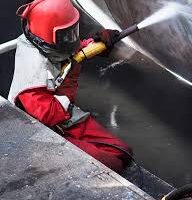Stainless steel is a cornerstone of modern industry and architecture due to its exceptional strength, corrosion resistance, and longevity. Among the most widely used stainless steel grades are 304 and 316, and when produced in hot-rolled form, they become particularly valuable for heavy-duty and structural applications.
This article explores the properties, differences, applications, and advantages of hot-rolled stainless steel 304 and 316, helping you understand which material is best for your needs.
What Is Hot-Rolled Stainless Steel?
Hot-rolled stainless steel is produced by rolling the steel at high temperatures—usually above 1700°F (927°C). This process makes the steel easier to form and shape, especially into large or thick sections. Once rolled, the steel cools naturally and is often coiled or cut into sheets or plates.
Compared to cold-rolled stainless steel, hot-rolled steel has a rougher surface and less precise dimensions, but it offers better ductility, strength, and is more cost-effective for large-scale applications.
Understanding Grades 304 and 316
Stainless Steel 304
-
Composition: 18% chromium, 8% nickel
-
Corrosion Resistance: Excellent in most environments, including fresh water, food processing, and indoor settings
-
Workability: Easy to weld, form, and fabricate
-
Applications: Kitchen equipment, tanks, machinery, structural supports, and consumer products
-
Cost: More economical than 316, making it ideal for general-purpose use
Stainless Steel 316
-
Composition: 16% chromium, 10% nickel, and 2-3% molybdenum
-
Corrosion Resistance: Superior to 304, especially in marine, coastal, or chemical environments
-
Strength: Higher resistance to pitting and crevice corrosion
-
Applications: Marine parts, pharmaceutical equipment, chemical processing, coastal architecture
-
Cost: Slightly more expensive due to added molybdenum
Hot-Rolled 304 vs 316: Key Differences
| Feature | 304 Stainless Steel | 316 Stainless Steel |
|---|---|---|
| Corrosion Resistance | Excellent | Superior, especially to chlorides |
| Price | Lower | Higher |
| Common Environments | Indoor, general industrial | Marine, chemical, coastal |
| Heat Resistance | High | Higher than 304 |
| Weldability | Excellent | Excellent |
Common Forms and Sizes
Hot-rolled stainless steel 304 and 316 are typically supplied in:
-
Plates and Sheets (thickness: 3mm to 100mm)
-
Coils (widths: 1000mm to 2000mm)
-
Bars and Flats
-
Custom-cut profiles
They are generally delivered in a No.1 finish, which is a rough, matte surface resulting from hot rolling, annealing, and descaling.
Applications of Hot-Rolled Stainless Steel 304 and 316
Stainless steel grades 304 and 316 are among the most commonly used alloys in the industrial world, especially in their hot-rolled form. Their strength, corrosion resistance, and excellent formability make them ideal for demanding environments. Below is a detailed look at their use across four key sectors: construction, food and beverage, marine and chemical, and industrial fabrication.
Construction and Infrastructure
Hot-rolled stainless steel 304 and 316 are integral materials in modern construction and civil engineering. Grade 304 is often used in interior and exterior architectural elements, such as wall panels, structural supports, railings, and roofing systems. It offers excellent weldability and corrosion resistance in most atmospheric conditions.
However, when structures are exposed to more aggressive environments—such as coastal cities, industrial zones, or high-humidity areas—316 becomes the better option. Thanks to its added molybdenum content, stainless steel 316 offers superior resistance to chlorides and saltwater corrosion. This makes it the preferred choice for building facades, bridges, marine walkways, highway barriers, and coastal support structures.
Both grades are also used in public infrastructure projects where aesthetics, safety, and longevity are key. Handrails, bollards, and elevator cladding benefit from stainless steel’s durability and sleek appearance.
Food and Beverage Equipment
The food and beverage industry demands materials that are hygienic, easy to clean, and resistant to both organic and inorganic corrosion. Hot-rolled stainless steel 304 is the standard for most food processing equipment due to its resistance to mild acids, moisture, and cleaning agents. It’s used in the fabrication of kitchen counters, food-grade tanks, preparation tables, sinks, dishwashing units, and piping systems.
For applications requiring even higher resistance to corrosive elements, such as in the dairy, brewing, or pickling sectors, stainless steel 316 is preferred. Its improved resistance to chemical agents and sterilization processes makes it ideal for equipment used in beer production, fermentation tanks, pharmaceutical-grade water systems, and high-salinity food storage environments.
In addition to corrosion resistance, both grades offer non-reactivity with food, preventing contamination or flavor transfer—an essential feature for food safety compliance.
Marine and Chemical Environments
Grade 316 stainless steel is especially effective in marine and chemical environments due to its molybdenum-enhanced composition. It resists pitting and crevice corrosion in saltwater, acidic solutions, and various chlorides, making it the industry standard for shipbuilding, offshore oil rigs, and seawater processing plants.
Marine components like dock fittings, boat ladders, underwater piping, exhaust systems, and railing structures often rely on 316 hot-rolled plates and bars. Similarly, in chemical plants, 316 stainless is used for storage tanks, reactors, and valves that handle aggressive liquids and gases.
While 304 may be used in less corrosive chemical settings, 316 remains the top choice where corrosion resistance is critical for safety and long-term performance.
Industrial Fabrication
Hot-rolled stainless steel 304 and 316 are frequently used in general industrial fabrication. Due to their strength and workability, both grades are suited for manufacturing heavy equipment, machine frames, support structures, and large-scale industrial parts.
304 is used in fabrication jobs that require bending, welding, and forming — including enclosures, casings, and structural brackets. On the other hand, 316 is chosen when the equipment will be exposed to corrosive substances or high-humidity environments, such as waste treatment facilities, chemical plants, and coastal manufacturing zones.
Benefits of Using Hot-Rolled 304 and 316 Stainless Steel
-
Durability: Both grades provide long service life with minimal maintenance
-
Corrosion Resistance: Excellent protection in a wide range of environments
-
Strength: Hot-rolled forms offer superior strength for load-bearing uses
-
Fabrication Flexibility: Easy to weld, cut, and shape
-
Sustainability: 100% recyclable and environmentally friendly
Conclusion
Hot-rolled stainless steel 304 and 316 are essential materials in countless industries, offering a balance of strength, corrosion resistance, and workability. Whether you need a cost-effective solution for general construction or a high-performance material for marine and chemical applications, these stainless steel grades deliver consistent and reliable performance.
For any project requiring structural integrity and corrosion protection, sourcing the right grade of hot-rolled stainless steel is crucial — and 304 and 316 remain the top choices worldwide.



